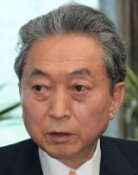[Editorial] Shoddy Nat`l Statistical Office
[Editorial] Shoddy Nat`l Statistical Office
Posted May. 12, 2009 03:43,
The Board of Audit and Inspection recently discovered that the National Statistical Office used erroneous data provided by provincial governments in compiling statistics, including livestock figures, area of cultivated land, and population trends without conducting a field investigation. In other words, the statistical office, the key institution for putting together national statistics, left policymakers to use such shoddy statistics as raw data for devising policy. Provincial and municipal governments cannot avoid blame for providing unreliable data. At the same time, the central government should severely punish those responsible for the substandard statistics.
When conducting research on livestock, which forms the foundation of policymaking on livestock farming, certain statistical officials entered false raw data from provincial governments in the system without visiting chicken farms or conducting interviews on farmers. Figures on the area of cultivated land failed to reflect reality since the statistical agency failed to conduct a proper study. The number of people who died without surviving relatives is also inaccurate in the national population study.
The central government can establish reasonable and scientific projections and plans only if they are based on accurate and refined statistics. Figures that fail to reflect reality paint a misleading picture of the present as well as the future, which lead to policy failures. They are highly likely to create market confusion by sending wrong signals. Accuracy is a virtue at private statistical institutions, but more so for the National Statistical Office, which should be able to present an objective reality of the nation. Inaccuracy could bring more dire consequences.
The outdated mindset of public officials partly accounts for shoddy statistics. According to Dr. Park Seong-hyeon, a statistics professor at Seoul National University, only 54 among 371 statistical production institutions in Korea had personnel in charge of statistics as of last year. The number of personnel in those institutions was an average 1.8. The number of statistical and analytical workers per one million people was nine for Korea in 2004, while New Zealand had 245, the Netherlands 159, Canada 139 and Australia 87, according to the Korea Development Institute.
Unlike other commissioner-level officers who enjoy vice minister status, the National Statistical Office chief is below them in the public sector hierarchy. Furthermore, the appointment of the statistical head was often intended to reward officials at the Strategy and Finance Ministry who wished to climb up the hierarchy. Those in charge of statistics at many other administrative agencies did not receive as much respect as they deserved, either. Their low morale is partly to blame for the shoddy statistics.
Former economics professor Lee In-sil is the newly appointed head of the statistical office. She should accelerate efforts to enhance the reliability of national statistics. President Lee Myung-bak should also understand the importance of national statistics and help the new chief speed up reform in the statistical aspects of administrative affairs. Without accurate statistics, it will be a long time before Korea becomes an advanced nation and earns public trust in government policies.







